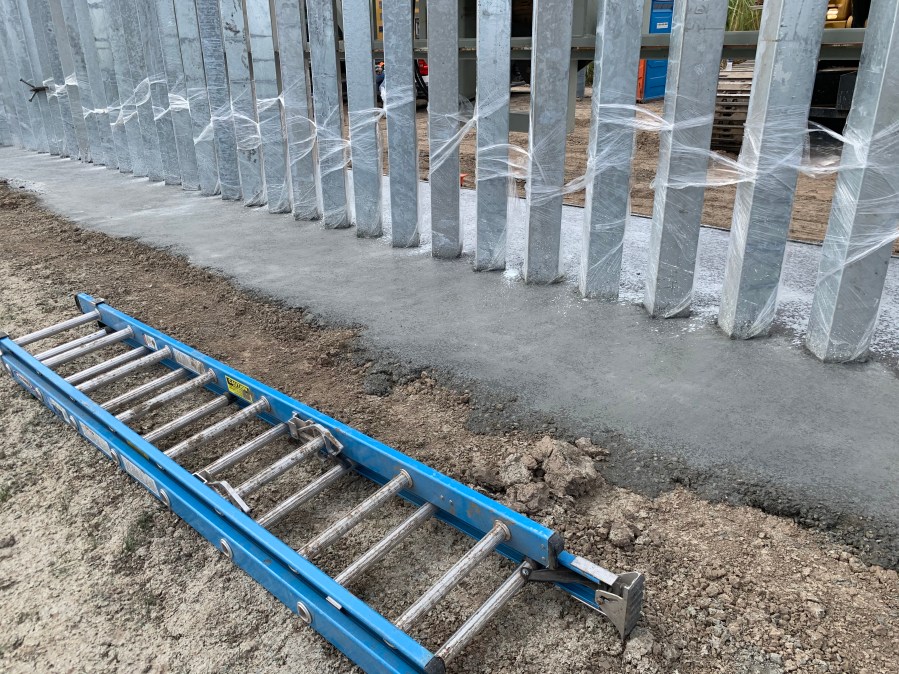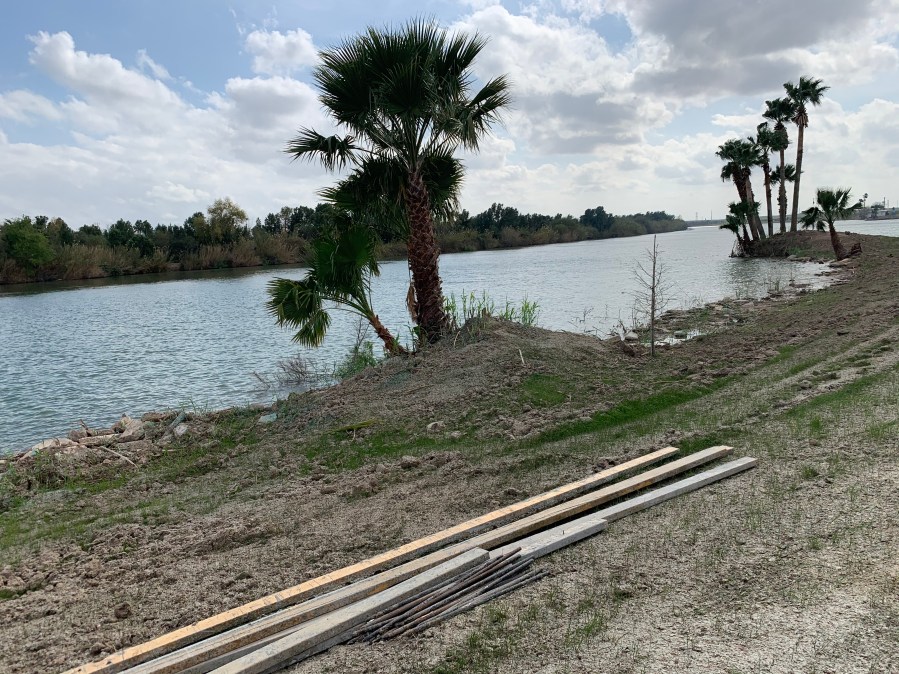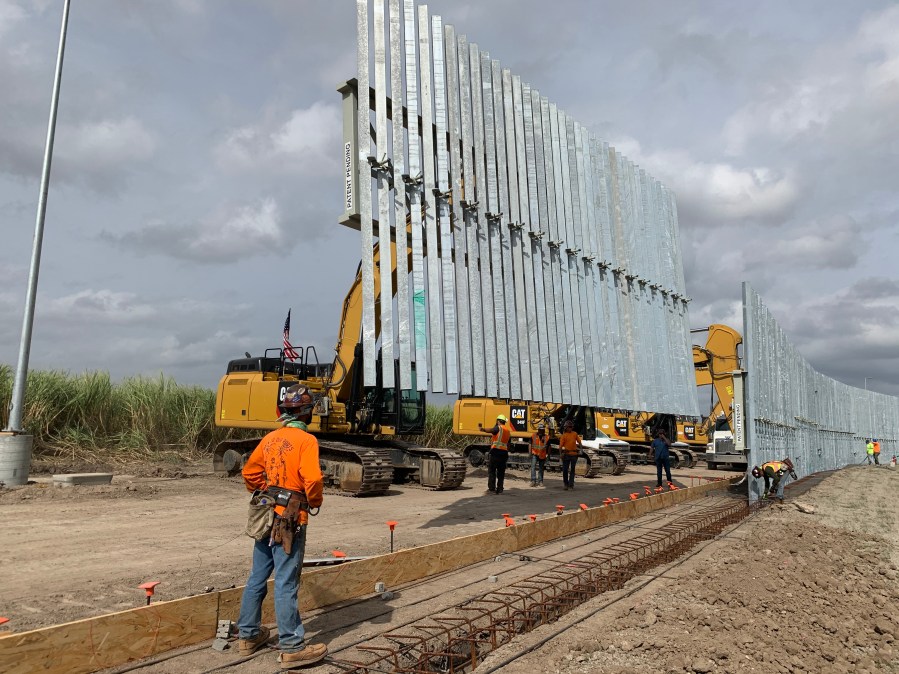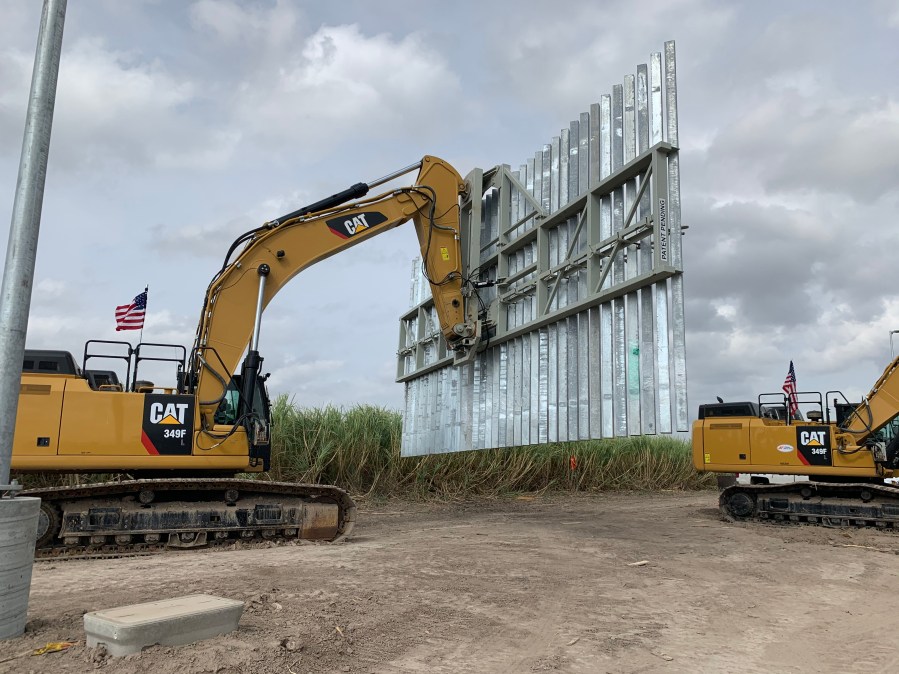MISSION, Texas (Border Report) — For his 50th birthday on Sunday, Tommy Fisher got his ultimate wish: His construction crews began building in earnest three miles of border wall on private property in South Texas.
Since a federal judge last week lifted a restraining order that had restricted his plans, the president and CEO of Fisher Sand & Gravel Company said his workers have erected about half a mile of his patent-pending private border wall design along the banks of the Rio Grande south of the town of Mission.
“That’s just two and a half days of building you’re seeing,” Fisher said proudly as he gave Border Report a tour of this busy construction site on Wednesday afternoon.

The 18-foot-tall galvanized steel bollards jut straight toward the blazing South Texas sky, glistening a bright metallic gray as they meander along the banks of this private peninsula-shape waterfront property. There is a concrete sidewalk on both sides of the fence, and the entire riverbank is cleared and graded with baby shoots of newly planted Bermuda grass poking up throughout.
Fisher is most proud of the galvanized steel material, which he says won’t rust or decay for upwards of 125 years. This is unlike the reddish and rusty bollards that government contractors are putting up elsewhere on the Southwest border.
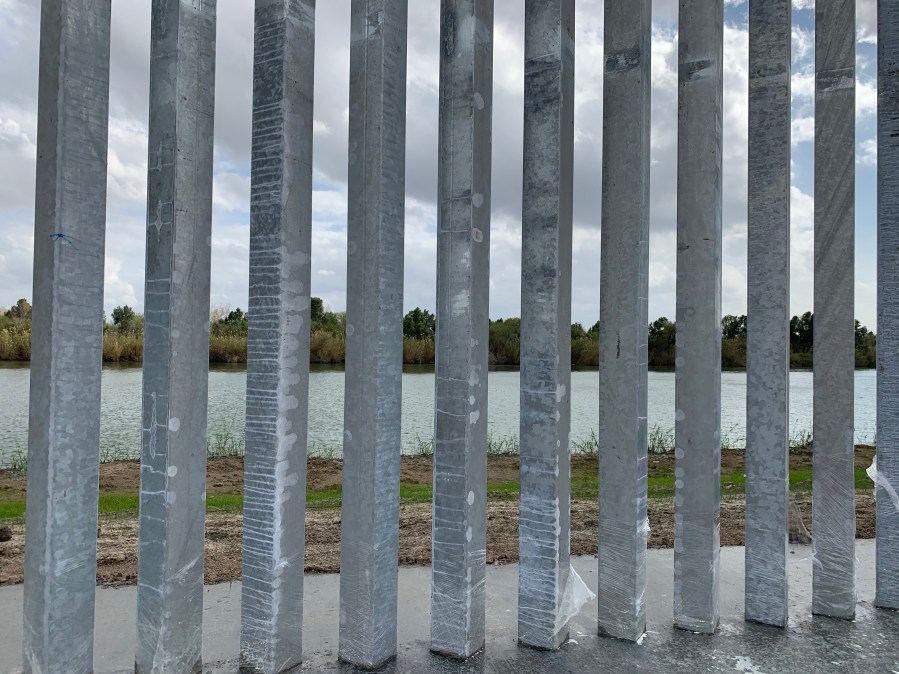
“Once you galvanize and put that zinc coating on regular steel, it will bond for 100 to 125 years. And we paved the concrete road, so there’s no dust if you’re driving. So that’s why we like to call our whole system a ‘no rust, no dust’ solution to border security,” Fisher said.
Most importantly, Fisher says, building the wall so close to the river creates an immediate barrier to prevent illegal immigration and makes for a “safe and transparent” place for Border Patrol agents to patrol.

Miles of White House-sanctioned border wall planned for South Texas is expected to be set back anywhere from a half-mile to 2 ½ miles from the river and built atop an existing levee system.
Fisher says that allows too much space for entering this country illegally and it puts agents as risk as they patrol through thick carrizo cane by the levee — cane that is so dense, agents say they cannot see 5 feet in front of them.
A nearby restaurant has increased the number daily of boat tours, which bring passengers to view this construction — the first private border wall to be built in Texas.
Drones fly overhead, and the hammering, buzzing and loud vibrations of heavy equipment can be heard throughout the area.
Fisher said he is negotiating with 50 other private landowners in South Texas about building the same design on their properties, but he said he won’t do another job until the federal government agrees to buy this one. He is offering this 3-mile section of border wall to the Department of Homeland Security for $14 million, or $16.5 million with 10 years of complete upkeep included, he said.
He anticipates construction to be completed in 12 to 14 days, which is slightly longer than the “eight days” he told U.S. District Judge Randy Crane in court Thursday in McAllen, Texas.
After a four-hour hearing on two federal lawsuits against Fisher Industries to stop construction of the private border wall, Crane ruled to lift a restraining order that had prevented the placement of metal bollards or pouring of concrete along the banks of the Rio Grande.
U.S. Justice Department filed one of the lawsuits late last year on behalf of the U.S. Section of the International Boundary and Water Commission, and the North American Butterfly Association file the other lawsuit on behalf of the National Butterfly Center, which is located a half-mile from this property. Both lawsuits stat that building so close to the Rio Grande without full clearance by the IBWC violates a 1970 U.S.-Mexico river treaty.
But in a decision that came as a surprise to many in the courtroom, Crane ruled that plaintiffs had failed to show that building the 18-foot-tall bollard fence so close to the river would alter the course of the river or violate the treaty.
Read a Border Report story on Crane’s ruling.
The ruling gave Fisher the green light he was waiting for to begin building again.
With the land already cleared of carrizo cane, trenches dug and re-bar and underground cables already laid, Fisher said his crews on Sunday immediately began mixing concrete on-site and moving his six 117,000-pound Caterpillar 349E Hydraulic Excavators that lift and place 40-foot sections of bollard wall at a time. It’s a process he calls “lightning quick.”
Read a Border Report story about Fisher explaining his wall-building process.


Rey Anzaldua, left, whose family owns the property next to where the private border wall is being built watched as crews worked on Wednesday, Jan. 15, 2020 south of Mission, Texas. At right, 70-year-old Alfredo Cavazos, owns the property next to where the private border wall is being built. (Border Report photos/Sandra Sanchez)
But sitting in his wheelchair viewing the construction through a break in the carrizo cane, neighboring landowner Jose Alfredo Cavazos, 70, who owns 70 acres of riverfront property, called the metal bollards an abomination.
“It’s crazy what they are doing,” Cavazos said as he watched with his cousin Rey Anzaldua. “That giant fence says ‘No Mexicans Allowed!'”
Anzaldua worries that if there is a surge in water “it is going to affect us more than likely.”
“This property might be in Mexico,” Anzaldua said. “This definitely is going to cause water to flood on his property.”
Read a Border Report story on Cavazos’ concerns.
Visit the BorderReport.com homepage for the latest exclusive stories and breaking news about issues along the United States-Mexico border.

